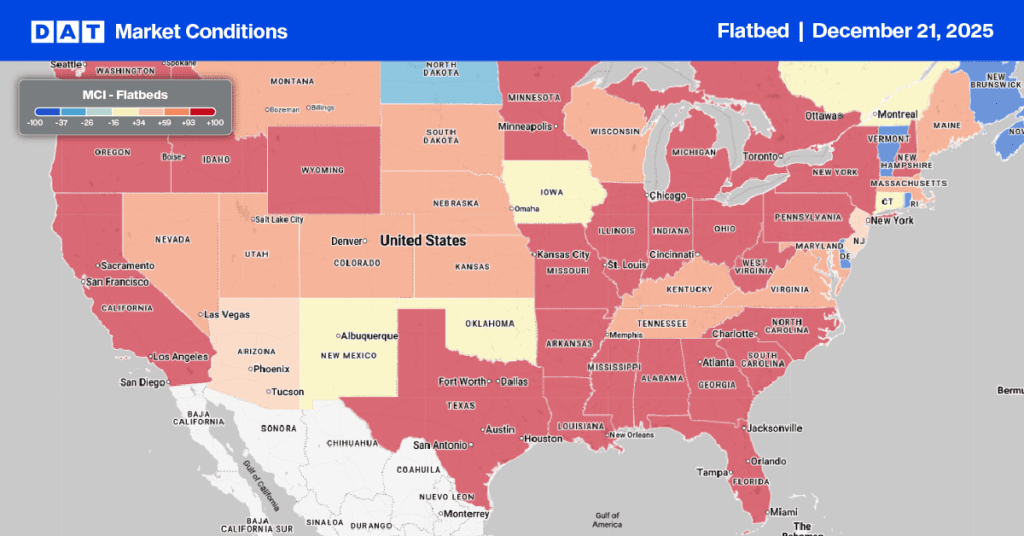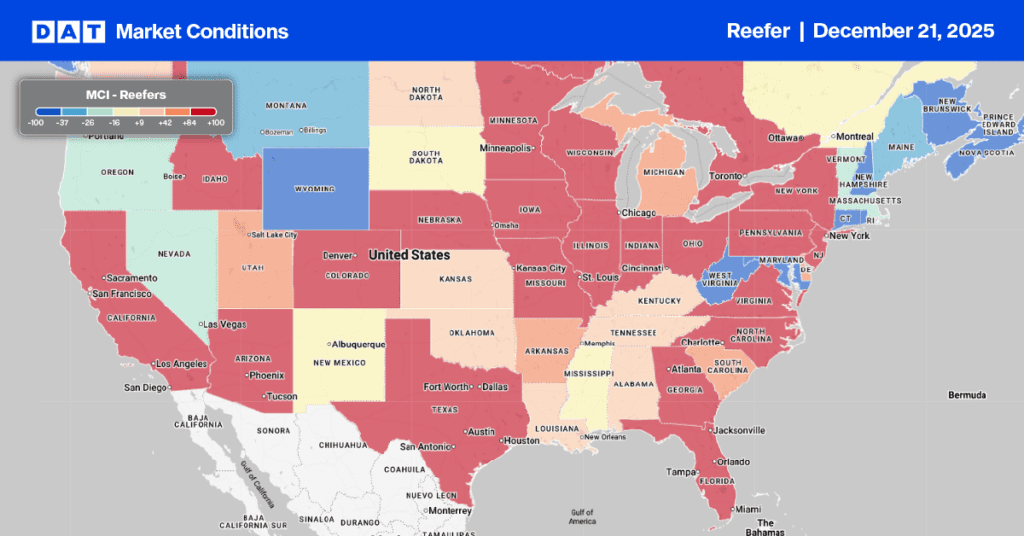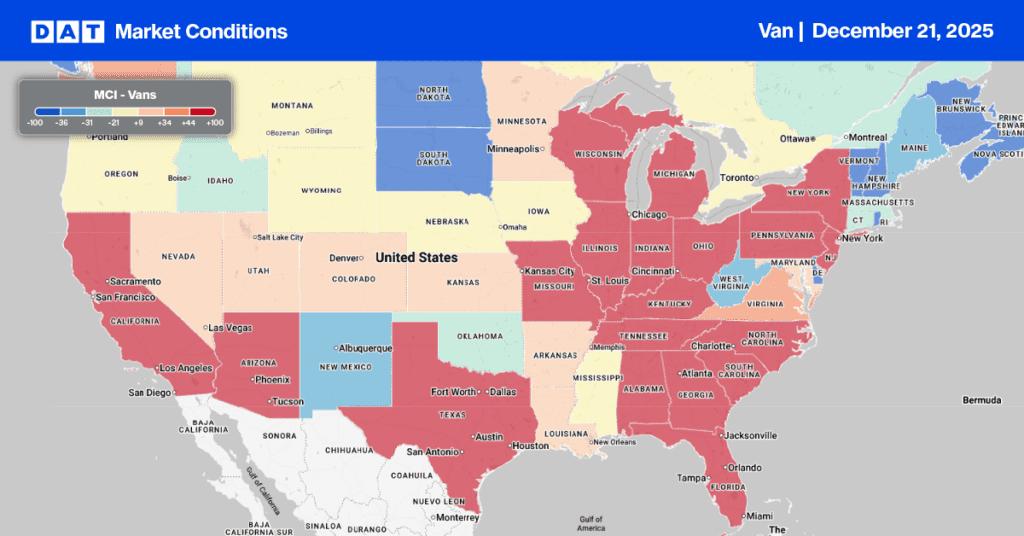Farmers, food processing companies and grocery retailers will spend about $1 billion on trucking this year, to haul a bumper crop of potatoes from the farm to the consumer. That’s enough potatoes to fill a million 53-foot vans. This could be good news for truckers and consumers, but it may not be so good for the growers.
A 7.9% increase in the fall potato harvest is driving prices down, but the higher quantity drives up costs for growers, distributors and retailers — otherwise known as shippers and consignees. Some potato farmers may still do well on revenue, but profit margins are likely to shrink signficantly. There’s a good summary of the implications for growers and grocers at The Packer, a trade magazine for the fresh produce industry.
Consumers who like potatoes are going to find some great bargains: wholesale prices for a 50-pound carton of russet potatoes have dropped to $5.50 or $6.00 from $10 in 2011. The same carton cost $15 in 2010. In early November, a 10-pound bag of the same potatoes cost $2.91 in grocery stores, down from $3.50 last year. That’s because supply is increasing while demand for potatoes is trending down, not up. Even so, potatoes are the number one vegetable purchased by consumers.
Here are a few thoughts about the impact on trucking.
First of all, how do I get to a million truckloads? Here’s the math, back-of-the-envelope style:
The USDA reported that the fall potato crop yield was 422 million hundredweight (A “hundredweight” is 100 pounds, or one-twentieth of a ton, and it’s abbreviated as CWT.)
A 48-foot van can haul 440 CWT, which is 22 tons or 44,000 lbs. That’s betwen 20 and 22 skids, depending on the size of the potato, (You can fit 28 or 30 skids on a 53-foot van, but you’d be overweight under most circumstances) Obviously there are different trailers or lighter equipment that can carry more potatoes, but let’s go with 22 tons.
Divide 422 million CWT by 440 CWT to get 959,000 and change. Some of those potatoes will be frozen, but that doesn’t change their weight very much — but it does mean they have to be hauled at least twice: once from the field to the processing plant, and a second time by reefer to the distributor or retailer. Wholesalers, distributors and other warehouse operations might also ship and receive potatoes, processed or not, so the 959,000 is actually a very conservative number of truckloads. A million is probably conservative too, but I rounded up.
In the grand scheme of things, a million truckloads represents a small portion of U.S. trucking freight in a year. The DAT Load Boards alone are host to more than 60 million loads posted per year. But a million truckloads in a single season? That’s a lot of freight. And a 7.9% increase means 70,500 more truckloads of potatoes this fall compared to 2011.
Have you been moving potatoes this season? Share your stories — or your favorite recipes — in the comments section, below.

I typed “potatoes” into my search engine, and there was a bumper crop online, too!


